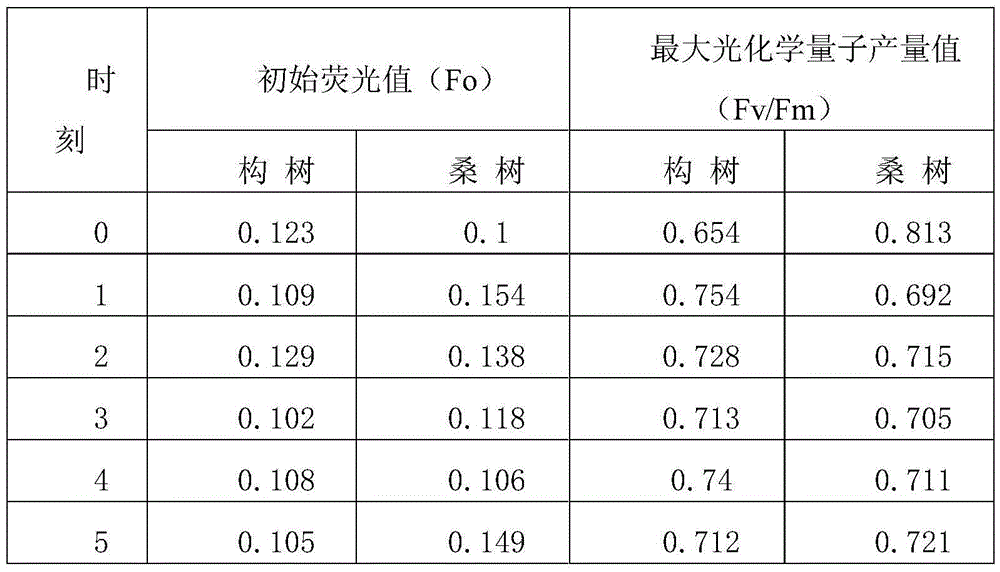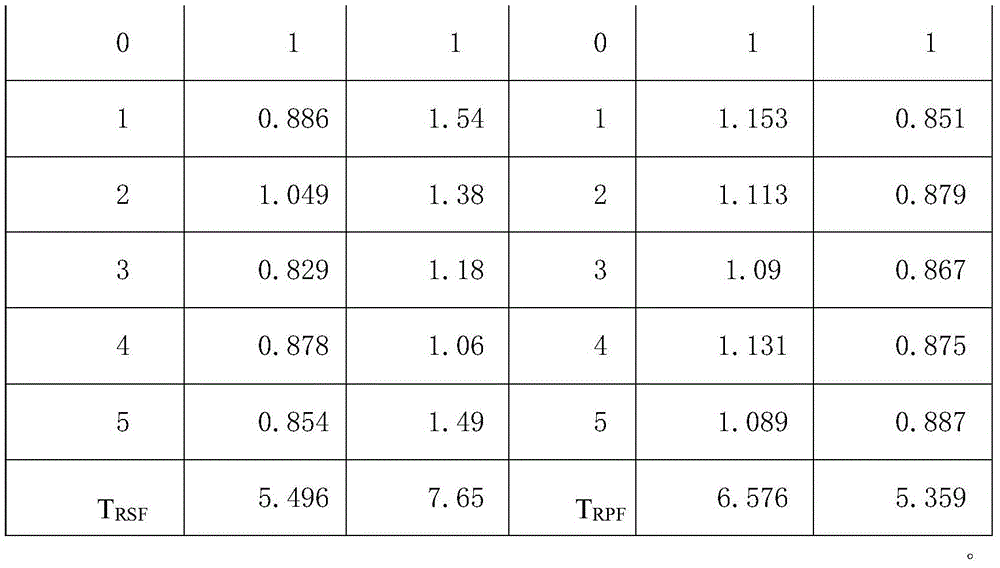A Rapid Quantitative Method for Calculating Intrinsic Drought Resistance of Plants
A quantitative calculation, drought-resistant technology, applied in agricultural engineering and crop information detection, drought-resistant seed selection, can solve problems such as long measurement time, slow response to plant water changes, and achieve fast speed, timely response to fluorescence information, and easy operation. quick effect
- Summary
- Abstract
- Description
- Claims
- Application Information
AI Technical Summary
Problems solved by technology
Method used
Image
Examples
Embodiment 1
[0032] In the first step, before the experiment, fresh branches of syringa plants with relatively consistent growth were picked on the campus of Jiangsu University, and the base of the branches of the plants was wrapped with a damp cloth to slow down the water loss.
[0033] The second step is to quickly return to the laboratory. After cleaning the dust on the surface of the leaves, pick 6 fresh leaves of the mulberry tree of the same size and put them in a basin filled with water to soak for 30 minutes.
[0034] Step 3: After soaking the leaves for 30 minutes, they become saturated with water. Take out the saturated leaves after soaking, quickly and gently absorb the water on the surface of the leaves with a dry towel and facial tissue, and then place them on a dry and ventilated table.
[0035] The fourth step is to take the above-mentioned saturated leaves treated in step three and use the IMAGING-PAM modulated chlorophyll fluorescence meter to measure the initial fluorescen...
Embodiment 2
[0041] In the first step, before the experiment, 6 leaves of mulberry trees with relatively uniform growth were picked on the campus of Jiangsu University and put into fresh-keeping bags.
[0042] The second step is to quickly return to the laboratory, and put the picked fresh leaves into a basin filled with water to soak for 30 minutes.
[0043] The third step is to take out the soaked leaves after 30 minutes, dry the water on the surface of the leaves with a dry towel and tissue paper, etc., and place them on a dry and ventilated desktop.
[0044] The 4th step, get above-mentioned initial fluorescence value (Fo) and PSⅡ maximum photochemical quantum yield value (Fv / Fm) of mulberry leaf when measuring 0 level fluorescence with the IMAGING-PAM modulated chlorophyll fluorescence meter of the above-mentioned saturated leaves treated by step 3, The measurement was repeated 3 times, and the average value was taken as the measured value at this moment.
[0045] In the fifth step, ...
PUM
 Login to View More
Login to View More Abstract
Description
Claims
Application Information
 Login to View More
Login to View More - R&D
- Intellectual Property
- Life Sciences
- Materials
- Tech Scout
- Unparalleled Data Quality
- Higher Quality Content
- 60% Fewer Hallucinations
Browse by: Latest US Patents, China's latest patents, Technical Efficacy Thesaurus, Application Domain, Technology Topic, Popular Technical Reports.
© 2025 PatSnap. All rights reserved.Legal|Privacy policy|Modern Slavery Act Transparency Statement|Sitemap|About US| Contact US: help@patsnap.com



